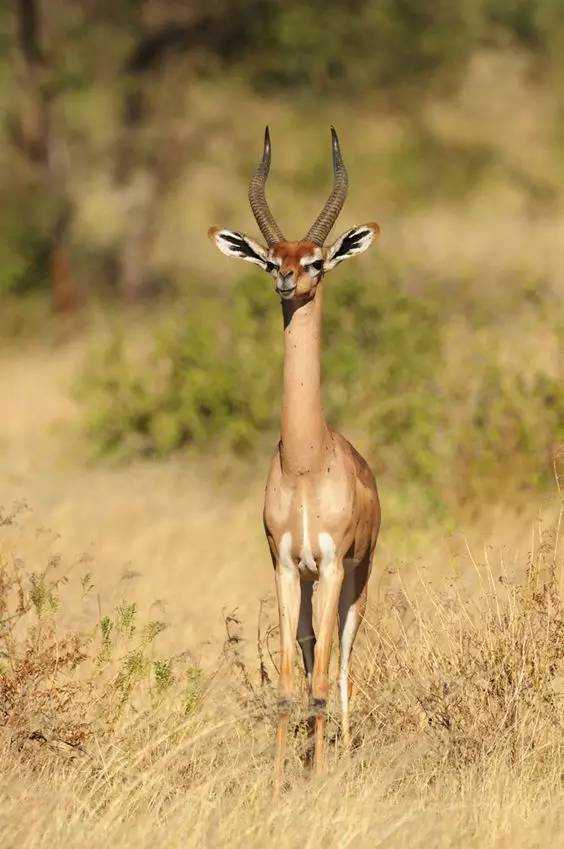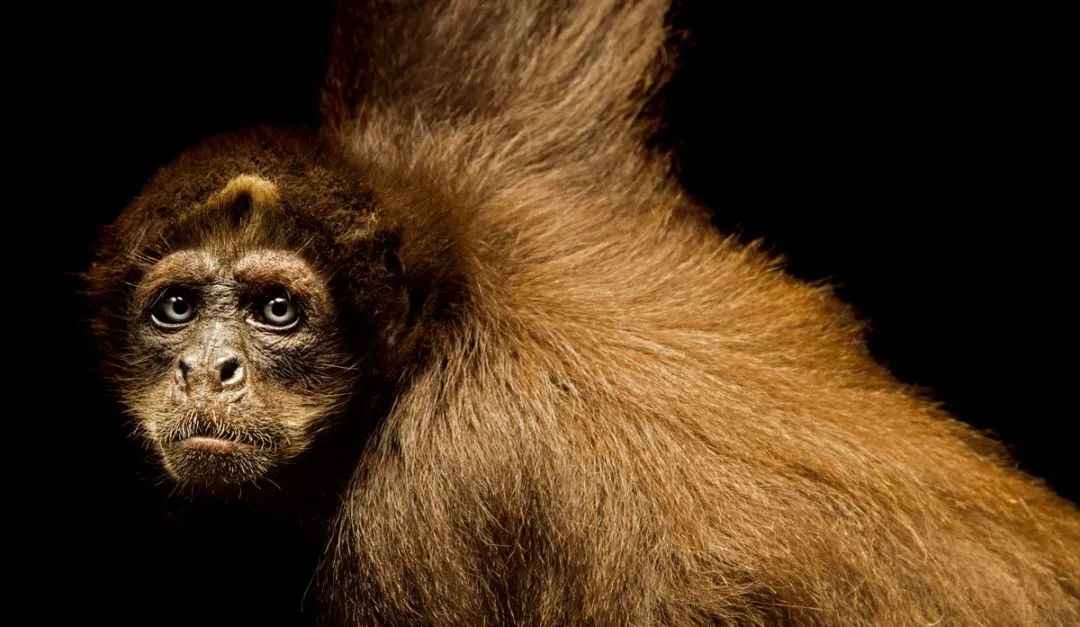The gerenuk’s most striking feature is its disproportionately long neck, which can reach up to 60 centimeters—allowing it to browse on leaves, shoots, and flowers from trees and shrubs that other antelopes cannot access. Standing 80–100 centimeters at the shoulder, it has a lean body, large eyes, and small, backward-curving horns in males. Its skin ranges from light tan to reddish-brown, blending with dry grasses, while a white underbelly reflects sunlight. When feeding, it rears up on its hind legs, using its prehensile lips to pluck foliage—a behavior resembling a miniature giraffe.
Source: Images from the Internet, if there is any infringement, please contact the removal of
Highly adapted to arid environments, the gerenuk can go long periods without drinking, obtaining moisture from the plants it eats. It lives in small family groups or pairs, with males defending territories through scent marking and displays. Despite its delicate appearance, it is agile and can sprint to evade predators like lions, cheetahs, and hyenas. Females give birth to a single calf, which hides in vegetation for the first few weeks of life.
Listed as "Near Threatened" by the IUCN, the gerenuk faces threats from habitat loss due to agriculture, livestock grazing, and droughts exacerbated by climate change. Illegal hunting for meat and trophies also impacts populations. As a specialized browser, it plays a crucial role in seed dispersal and shaping vegetation structure in its ecosystem. Conservation projects in East Africa focus on protecting its habitat and promoting coexistence with local communities, highlighting the gerenuk’s unique place in Africa’s diverse wildlife tapestry.
The gerenuk’s elegant form and remarkable adaptations serve as a testament to nature’s ingenuity in arid landscapes. Its ability to thrive where resources are scarce reminds us of the intricate balance between species and their environments, making it a symbol of resilience in the face of ecological challenges.









